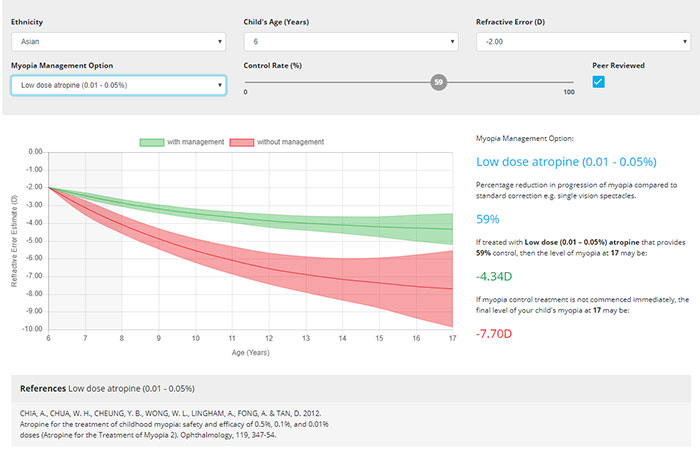Myopia Progression
Myopia (or nearsightedness) is one of the most common eye disorders in the world. The prevalence of myopia is about 30 to 40 percent among adults in Europe and the United States, and up to 80 percent or higher in several East Asian countries. Estimations are by the year 2050, roughly half of the world’s population will be nearsighted.
Myopia not only causes blurry distance vision without correction, but also causes the eye to elongate (front to back). This leads to increased risk of ocular health problems like macular degeneration, glaucoma, cataracts and retinal detachments. These conditions can cause vision loss.
Genetics are a huge factor in myopia progression, if both parents of the child are myopic then the risk of progression greatly increases. Another risk factor is visual environment for each patient. A child who does more near work will have a higher risk of developing progressive myopia. Time outdoors is a key influence in helping slow down progression as well. Studies suggest children should spend roughly 10 hours outdoors every week to minimize risk of progression.
Here is an example of the myopia progression calculator we use in our clinic to determine risk:

Ways to help slow down progression
MiSight contact lenses – MiSight is the only FDA-approved soft contact lens approved to slow down the progression of myopia. Our Doctors have gone through extensive training to become certified to fit these groundbreaking lenses.
Diluted Atropine eye drops – These drops are to be instilled once a day before bed. Many studies have been done charting the effectiveness of these drops in slowing the progression. This allows for patients that do not want to wear contact lenses the freedom to continue wearing glasses.
Orthokeratology – This is a hard contact lens worn overnight that reshapes the cornea (similar to LASIK) in a way that helps correct refractive error. The contacts are removed in the morning and the cornea retains its shape throughout the day so patients can see clearly without any correction. Your eye doctor can determine if you are a good candidate for this treatment option.
The end goal for myopia control is to help decrease the long-term health risks related to increasing nearsightedness. Also, to make sure patients remain in the prescription range for possible refractive surgery as some patients do not qualify if their myopia is too high. These are the reasons we have decided to take a proactive approach to treat myopia progression.
Come see us for an evaluation to find out if your child’s myopia is progressing and which method could work best for you!
